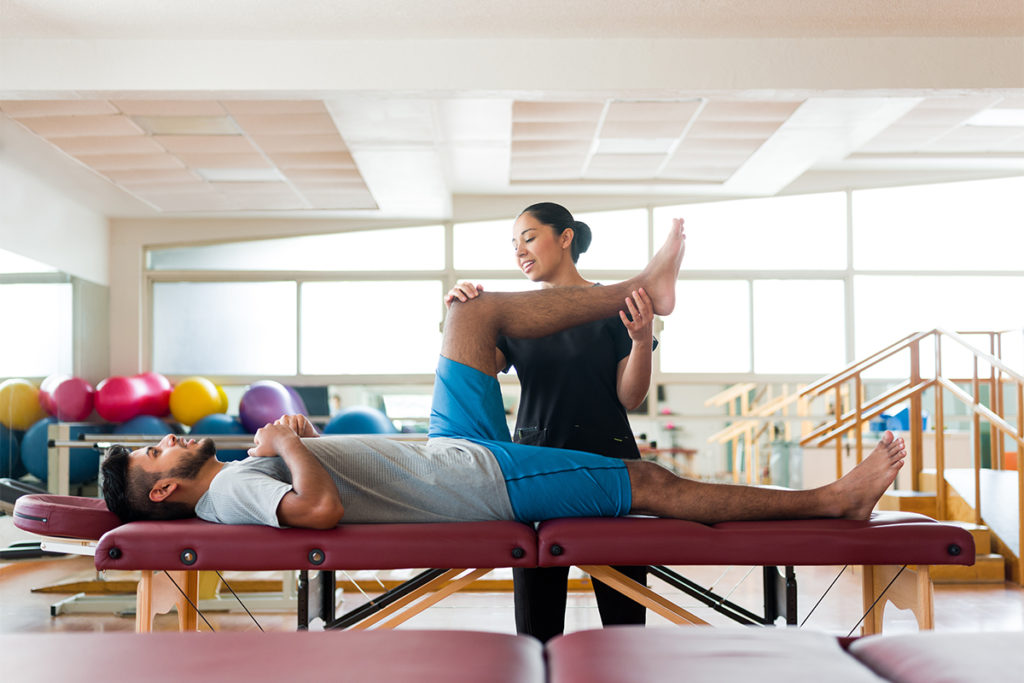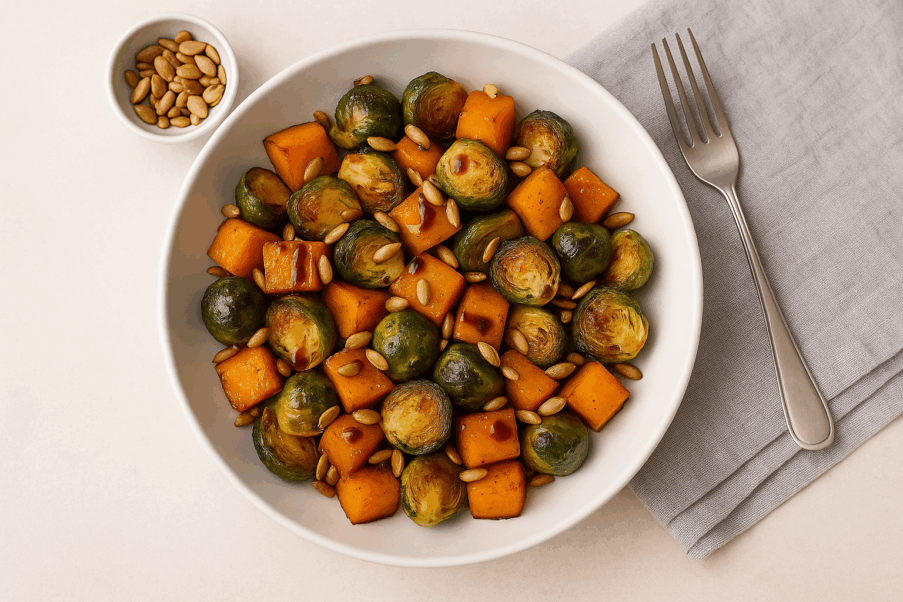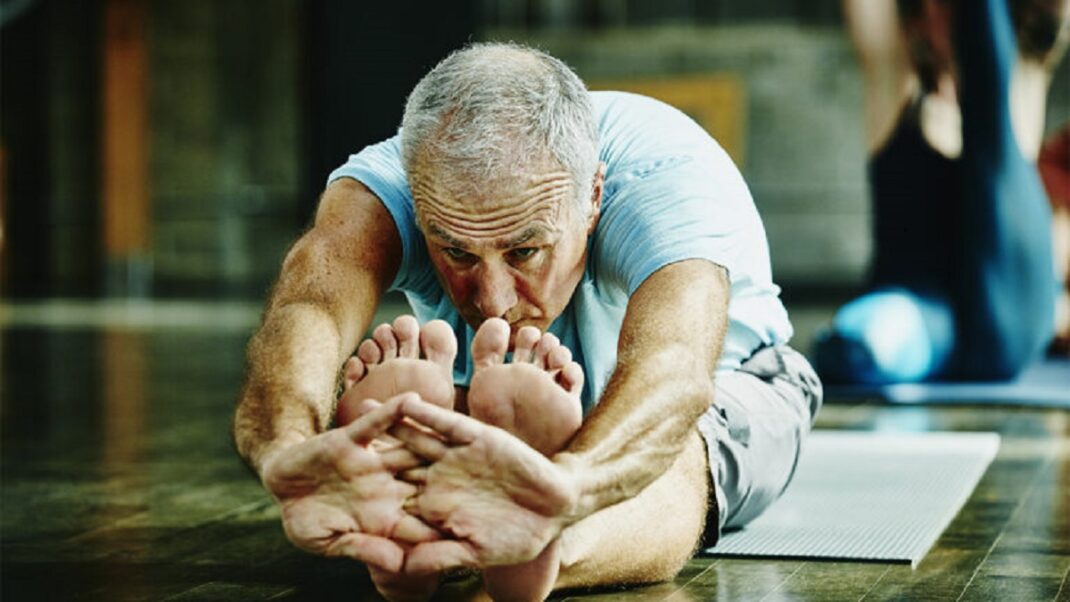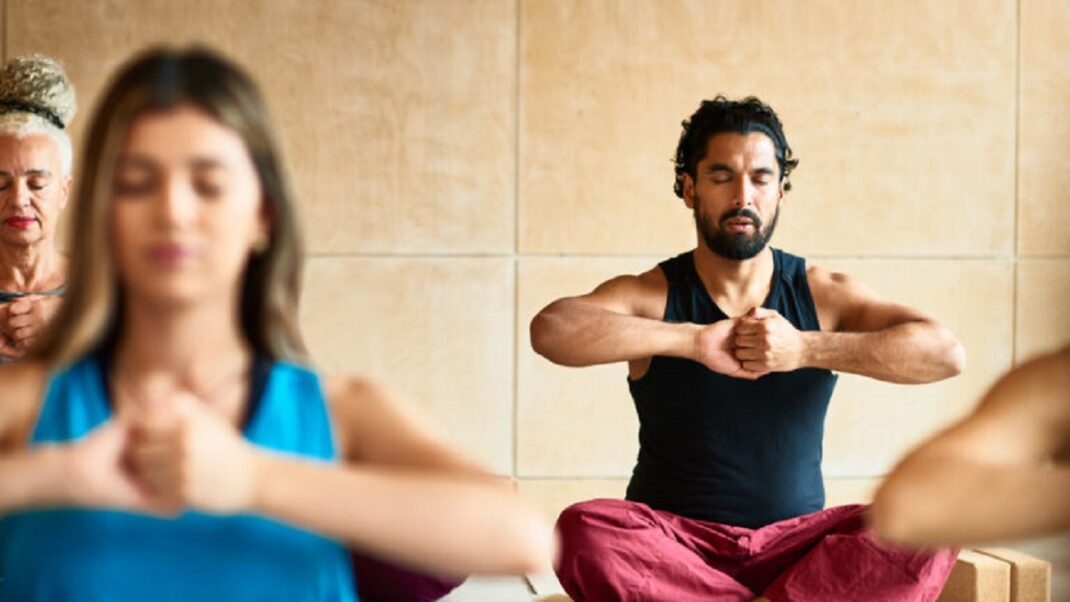Medicine Ball Magic
Add variation and vector to your core exercises.
Do you want to revitalize the core sections of your classes? Training the core is fundamental to any program. Why not add new “twists” using fundamental, but often underused, equipment?
Medicine balls have been around for years and are a staple in boxing and sports performance communities, as well as many fitness facilities. If you’re struggling to find new ways to incorporate medicine balls into your group classes (besides Russian twists), check out these variations.
Windmill
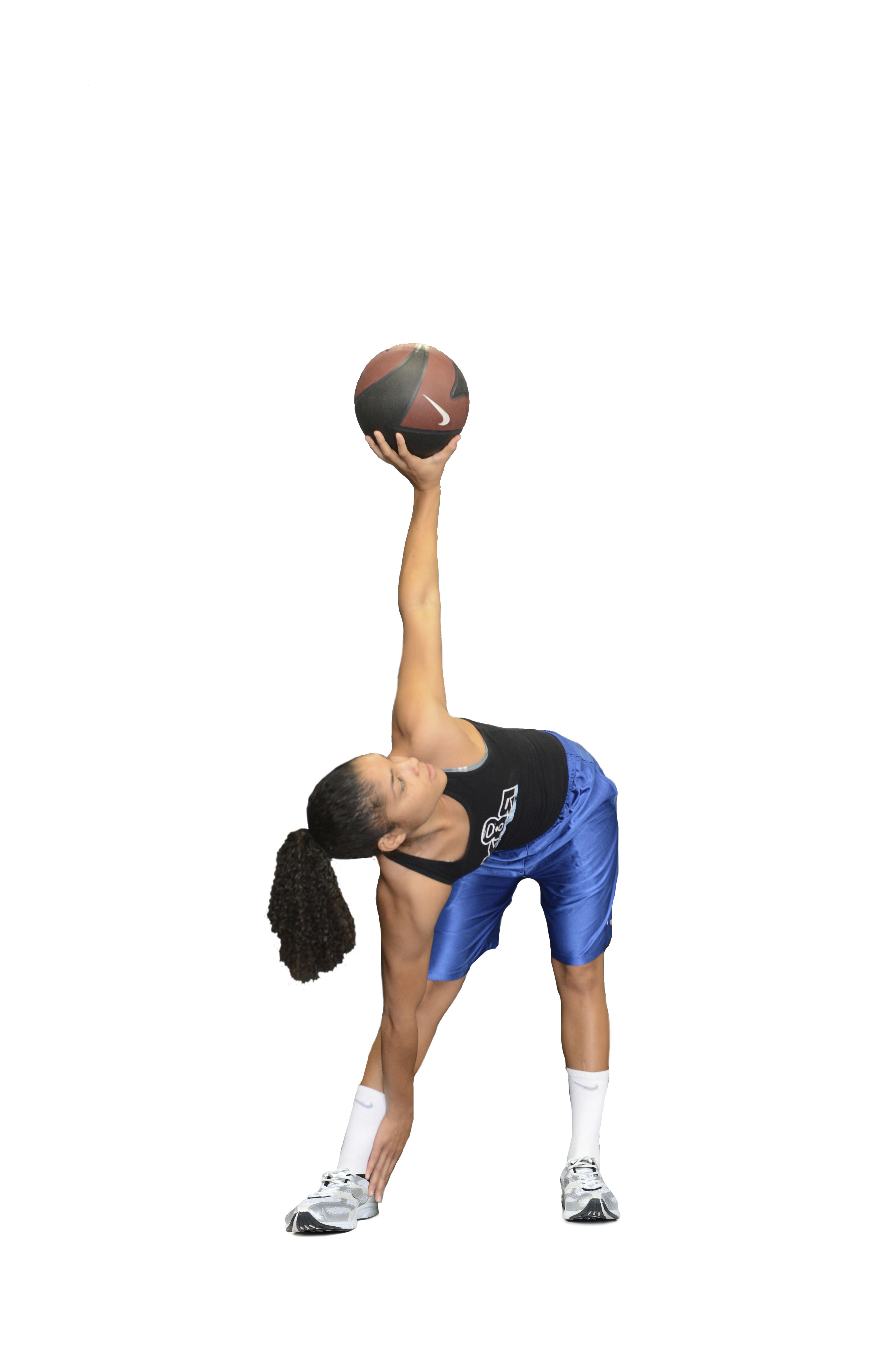
This rotational core strength exercise works well as part of a warm-up. The exercise requires stability in the shoulder region and movement under a light load. It actively stretches the hamstrings and gets the entire body fired up.
The windmill is traditionally performed with a kettlebell or dumbbell; however, using a medicine ball adds a dimension of concentration and balance.
- Stand tall with feet about hip width apart, balancing the medicine ball in your right (R) hand above your head. Lock your R elbow and “pack” or stabilize the shoulder.
- Turn your feet slightly to the left (L); keep your legs straight. Stick your hip out and back toward the R while tracking your L hand down the inside of your L leg toward the floor.
- Maintain the medicine ball above your head, extending your R arm toward the ceiling throughout the movement.
- Once you’ve touched the floor or reached as far down as you can with your L hand, use your core to stand tall in the start position.
Rotational Crunch
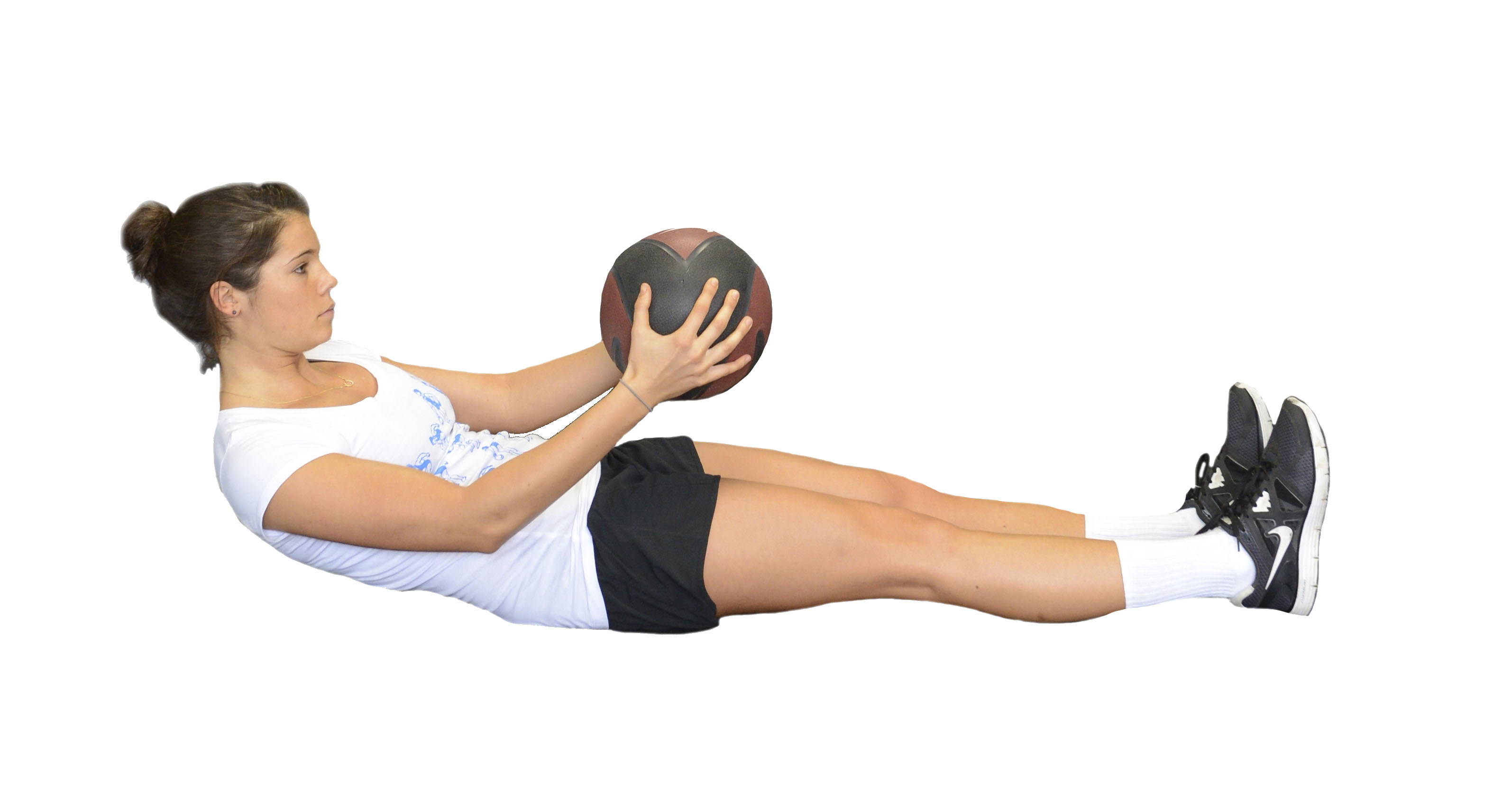
Use this exercise during the strength portion of class. The move is slow and controlled and uses the entire abdominal musculature.
- Start in a seated position with the medicine ball in your hands; keep the legs straight.
- Moving in a counterclockwise circular motion, slowly lower your torso backwards until your shoulder blades are just above the ground, and then sweep across the floor toward the R.
- Raise your torso back up into the seated position to complete the full circular motion.
- Repeat in the opposite direction.
The medicine ball provides both weighted resistance and counterbalance when you extend your arms. Keep the spine neutral and avoid excessive lumbar flexion.
Ball Slam
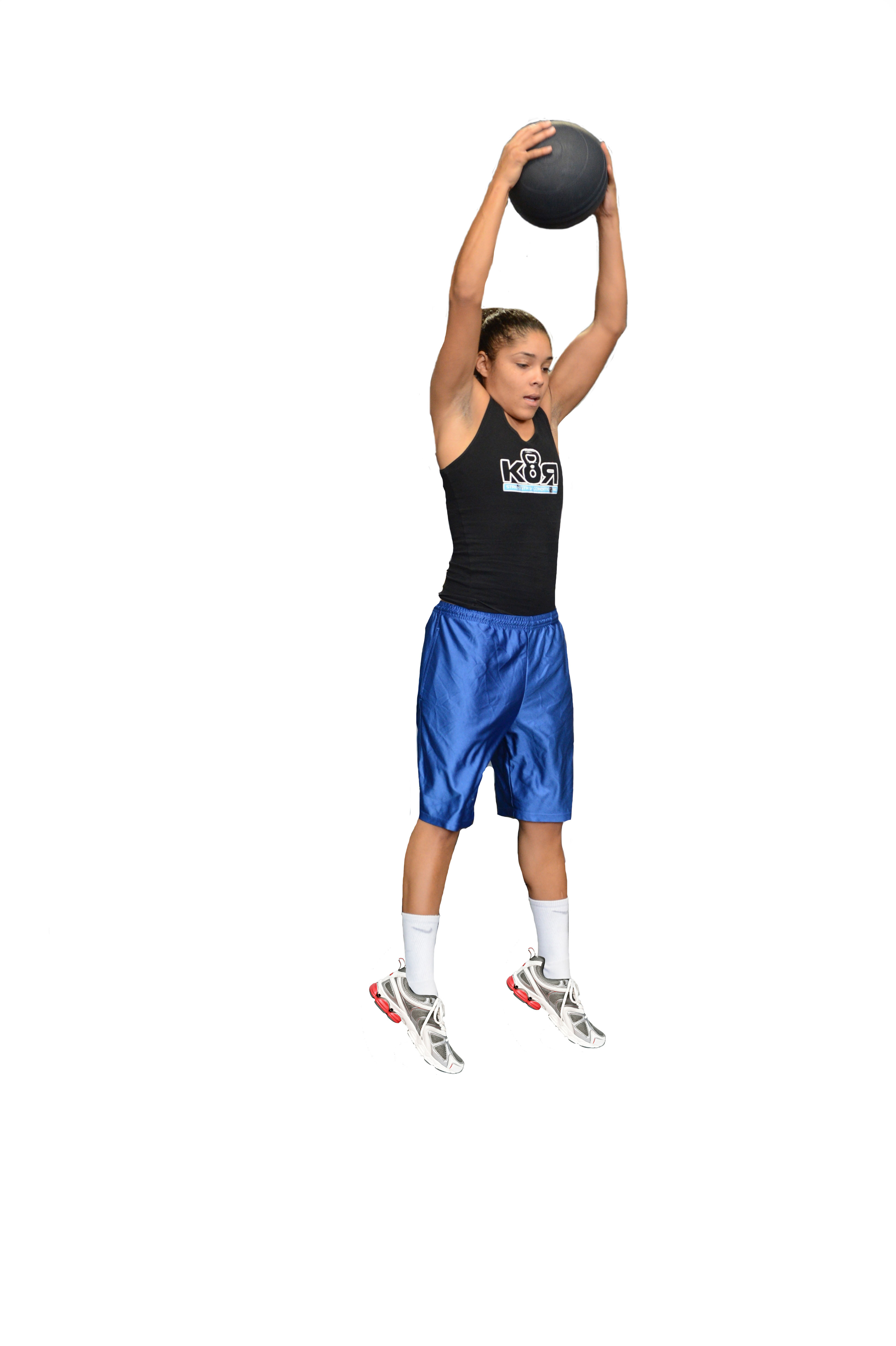
This is an excellent conditioning finisher. The ball slam is a dynamic and explosive exercise and must be performed with a special type of medicine ball that does not bounce (e.g., a gel-filled ball). Be forewarned that using a regular medicine ball that bounces may result in injury.
- Stand with the ball in both hands, raise it above your head and throw it hard toward the ground just in front of your feet. Let go of the ball as it passes your waist.
- Follow the ball’s momentum toward the ground by bending at your hips and knees. Pick up the ball as quickly as possible, keeping your heels grounded and maintaining a neutral spine.
- Stand back up and take the ball overhead, with your torso fully extended.
- Continue, repeating the exercise as quickly as possible for a set number of reps or a set time.
Don’t allow the ball to “fall” passively to the ground. Common mistakes are to use only the arms to throw the ball down, and then to bend down to pick it up. Use the entire body to throw and retrieve it. Each step in this exercise is active, quick and forceful. When done properly, the ball slam will increase your heart rate and develop abdominal power.
Dan Bettcher, MS
Dan Bettcher, MS, CPT, PES, RKC, started his training career after seeking ways to increase his own athleticism while practicing Muay Thai. After a 10-year career in the U.S. Navy nuclear engineering field, he cofounded KOR Strength and Conditioning in San Diego.
